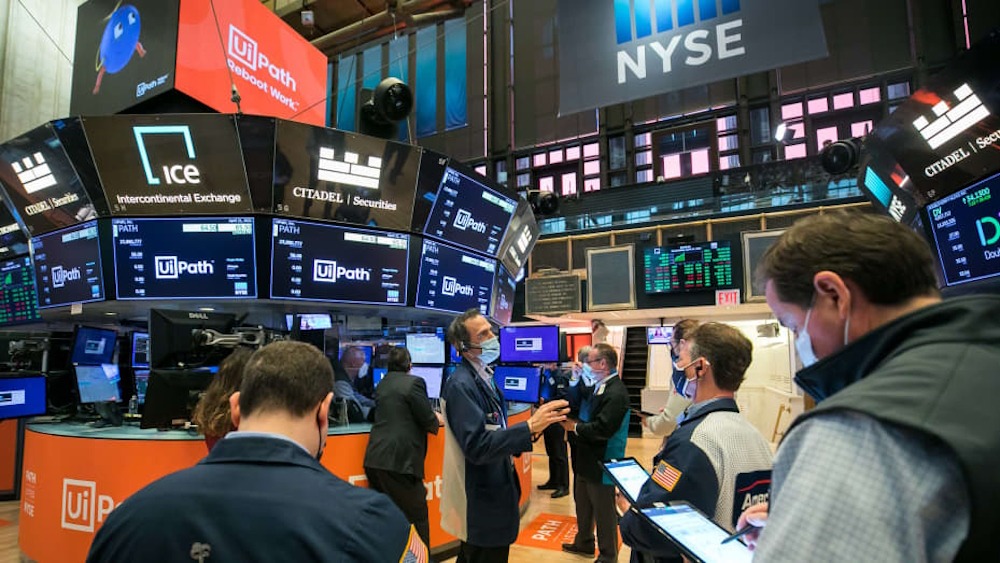
Dow Futures are trending downwards, as traders assess the ramifications of Moody’s downgrade of its U.S. credit rating. Moody’s expresses concerns regarding the multi-trillion dollar U.S. debt burden, as legislators in Washington deliberate on a budget bill that, according to some experts, may further increase the nation’s liabilities. U.S. stock futures declined on Monday as investors evaluated Moody’s decision to downgrade the nation’s credit rating. The Dow futures contract experienced a decrease of 345 points, equating to 0.8%. Meanwhile, S&P 500 futures saw a decline of 66 points, or 1.1%, and Nasdaq 100 futures fell by 301 points, representing a 1.4% drop.
The primary indices on Wall Street experienced gains for the fifth straight session on Friday, with market sentiment uplifted by a U.S.-China trade agreement reached earlier in the week, which ignited optimism that President Donald Trump’s tariff strategy might not be as confrontational as previously anticipated. Nonetheless, a closely-watched indicator of U.S. consumer sentiment from the University of Michigan fell short of expectations in May, while one-year inflation expectations increased, as households expressed concerns regarding the effects of the levies. For the week, the blue-chip Dow Jones Industrial Average, benchmark S&P 500, and tech-heavy Nasdaq Composite all experienced gains.
Attention is now directed towards Moody’s reduction of the usually high credit rating, with U.S. Treasury Secretary Scott Bessent remarking that the ratings were a “lagging indicator”. In an interview with NBC News’ “Meet the Press” on Sunday, Bessent remarked that he believes “that’s what everyone thinks” regarding the grades from credit agencies such as Moody’s. Moody’s has downgraded its rating of U.S. credit by one notch to “Aa1” from “Aaa”, stating on Friday that the country’s debt and interest levels are “significantly higher than similarly rated sovereigns”. The U.S. is presently confronted with a debt burden of $36.22 trillion, as reported by the Treasury Department. Moody’s remarked that “successive U.S. administrations and Congress have failed to agree on measures to reverse the trend of large annual fiscal deficits and growing interest costs”. U.S. Treasury yields, which typically exhibit an inverse relationship with prices, increased late on Friday subsequent to the announcement.
In light of current circumstances, Republican lawmakers in the House of Representatives are hastening efforts to advance Trump’s so-called “big, beautiful” tax bill before May 26. Notwithstanding the persistent internal discord regarding the legislation within the Republican party, this initiative gained momentum on Sunday, as the measure secured endorsement from a pivotal congressional committee. Importantly, four staunch GOP conservatives on the committee approved the bill’s progression, having previously obstructed its advancement late last week. However, a representative conveyed to reporters that, although “progress” has been made, “we didn’t get nearly far enough”.
Trump has advocated for prolonging his 2017 tax reductions and reducing taxes on certain types of income, such as tips, alongside an increase in expenditures on defense and border security. Some Republicans, however, continue to advocate for more substantial reductions in programs like Medicaid and the elimination of tax credits for green initiatives that were previously introduced by Democrats. The House is expected to vote on the bill later this week, which nonpartisan analysts have indicated could increase the national debt by $3 trillion to $5 trillion over the next decade.
In other developments, market participants are keeping a close eye on remarks made by Nvidia CEO Jensen Huang during an event in Taiwan. Nvidia CEO Jensen Huang on Monday introduced a range of new artificial intelligence technologies, catering to both enterprise and consumer applications, during his keynote address at the Computex AI exhibition in Taiwan. During a nearly two-hour address at the event in Taipei, Huang introduced innovative AI data center technology, AI cloud and computing products tailored for consumers, alongside AI software designed for robotic applications.
Huang emphasized NVLink Fusion, a platform that facilitates the construction of AI infrastructure for companies. The platform facilitates access to Nvidia’s servers for chips produced by other companies, a significant advancement for AI technology, according to analysts. Huang also announced small-form personal AI supercomputer products, new AI server technology, new AI agent software, and AI software to power robots. The development of new technologies will take place in collaboration with a range of Nvidia partners, including Acer, MSI, Gigabyte, Marvell, MediaTek, Qualcomm, and Fujitsu.
Huang’s address indicated that Nvidia is fully committed to preserving its dominance in AI technology development, as the company has significantly increased in value over the past two years due to the rapidly expanding industry. Despite the emergence of certain doubts regarding AI chip demand in recent months, the markets generally anticipate that Nvidia will sustain its competitive advantage, even as the company navigates new export restrictions on sales to China. Recent commitments from major U.S. AI spenders — chiefly Microsoft, Meta Platforms, Amazon, and Alphabet — to maintain expenditures in the hundreds of billions on AI infrastructure indicate a robust near-term demand for Nvidia.
Oil prices experienced a decline on Monday, relinquishing a portion of the gains accrued in the previous week as traders processed a blend of economic data from China. Brent futures experienced a decline of 0.5%, settling at $65.10 per barrel, while U.S. West Texas Intermediate crude futures also fell by 0.5%, reaching $61.65 per barrel. In April, China’s industrial production exceeded expectations, demonstrating resilience in factory activity despite the challenges posed by increased U.S. trade tariffs on exports. However, domestic demand exhibited signs of fragility, as retail sales for the month fell short of expectations. Traders exhibited caution in light of Moody’s downgrade of its U.S. credit rating. The United States holds the position as the largest consumer of oil globally.
